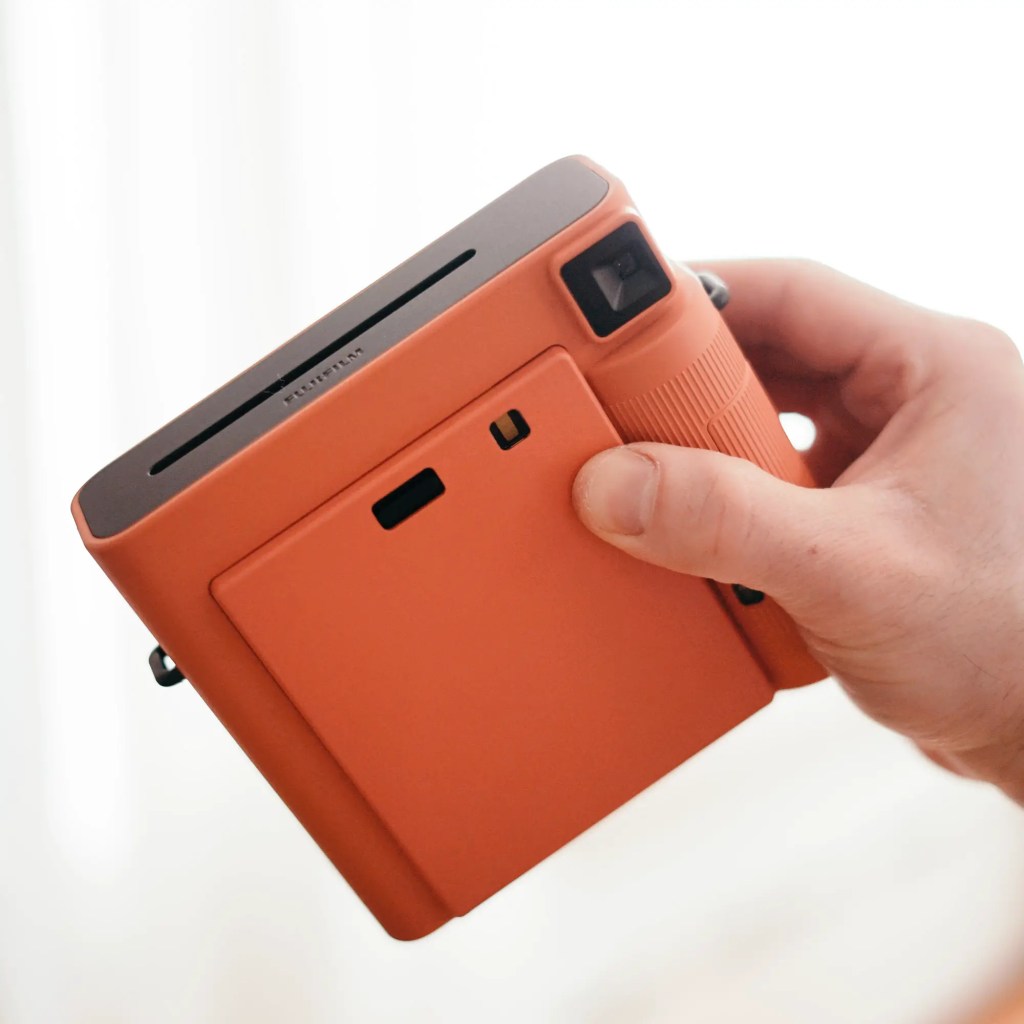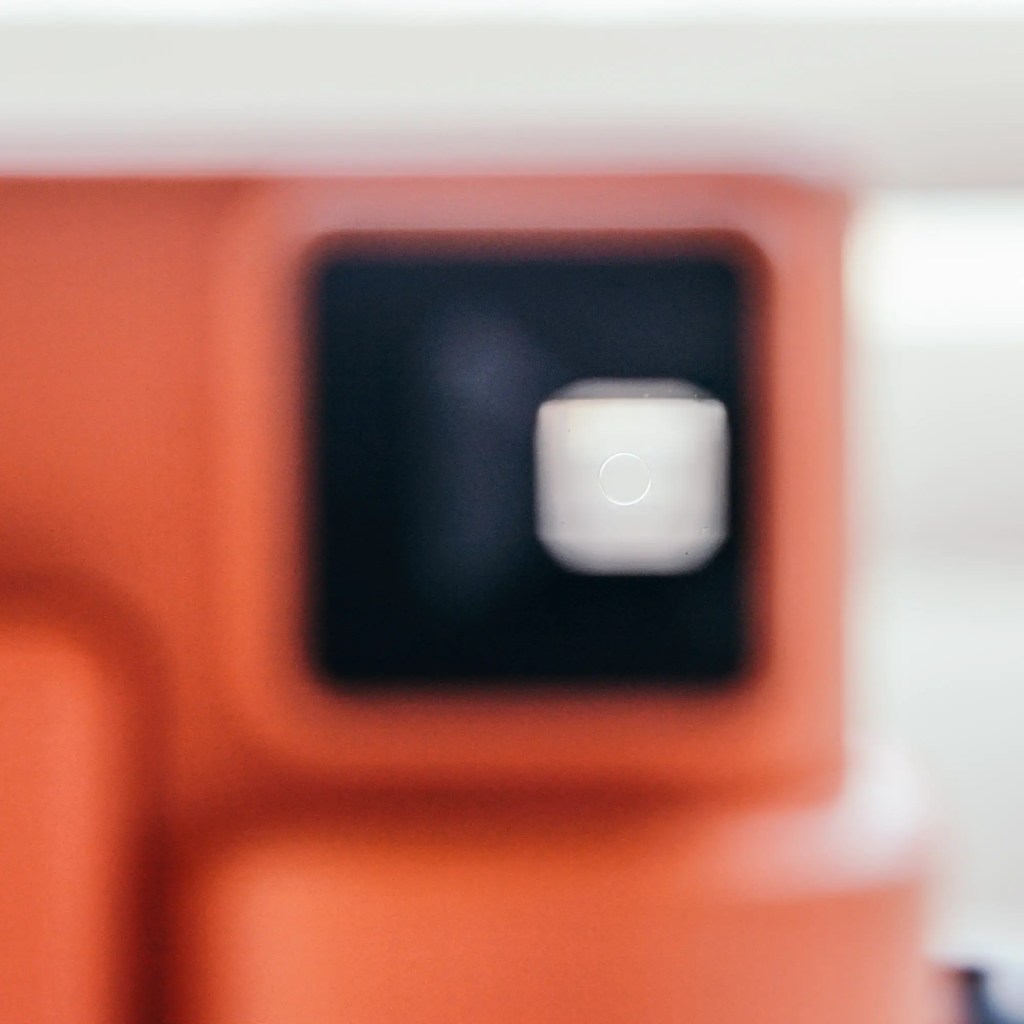Toward the end of last year, Fujifilm released a new instant camera to use with their Instax Square format film. Called the Instax Square SQ1, it’s one of the simplest and most visually striking instant cameras that the brand currently makes. And my lovely wife surprised me with one for my birthday.
I’ve spent the past few weeks shooting the Square SQ1 around the house, with my kids, out on walks, and even on a frigid night at the beach. In nearly every case, it was pure pleasure. And to my surprise, this camera even made one of my favorite photos of the year. Compared to my Polaroid One Step 2… well, let’s not get into that just yet.
Specifications and Features of the Instax Square SQ1
- Film format – Instax Square
- Lens – 65.75mm f/12.6
- Focus – Zone focus (Focus Free Normal and “Selfie”); Minimum focus distance – 11.8″
- Viewfinder – Optical VF with approx. 0.4x magnification
- Exposure Modes – Automatic
- Shutter Speeds – 1/2 second to 1/400 second
- Flash – Automatic flash, always on; range 1 to 7.2 feet
- Battery – Two CR2 batteries (included when new)
- Dimensions (W x H x D) – 5.1 x 4.7 x 2.3″
- Weight – 13.8 oz
- MSRP – $119.95

Fujifilm currently makes three Instax cameras which use their Instax Square format film. The SQ20 (which replaced the SQ10 that I reviewed here) is a digital/film hybrid camera with an LCD screen, plenty of user controls, and the ability to “print” onto Instax film only the photos that the photographer chooses. The $129 Instax SQ6 is a film-only instant camera that offers a fair number of user controls, including exposure compensation and a double exposure mode. Both of these cameras allow an impressive amount of creative control over how the final photo looks.
The Instax Square SQ1, on the other hand, does not. It is the least capable of the three currently-made Instax Square cameras (at least, by the spec sheet). In fact, it provides the photographer with nothing more than a shutter button and a control to activate “selfie mode” (which focuses close – about twelve inches away). And that’s it.
In addition to these sparse controls, the camera has a few other, uh, features? There’s a selfie mirror on the front of the lens, a strap lug on each side of the camera to attach a neck or wrist strap, and an automatically-advanced frame counter. Wow!

Shooting the Instax Square SQ1
There are few cameras as simple-to-use as the Instax Square SQ1. It is as much a point-and-shoot as a point-and-shoot camera can be. Simply load the camera with any pack of Instax Square film (plus two CR2 batteries), turn the On/Off/Selfie dial to ON, frame your subject in the optical viewfinder, and press the shutter release button.
The camera’s sharp lens and its narrow aperture ensure everything from one foot away to infinity will be in focus. The camera’s electronic brain, shutter, and flash do their best to shoot a properly-exposed photo every time we press the shutter release button.
For the most part, the SQ1 succeeds. In my testing, none of my photos were improperly exposed nor out-of-focus. The flash, which fires with every shot, bathes the subject in a softer light than I’ve seen in photos from other instant cameras. The lens creates images which are sharp and contrasty, and Fujifilm’s excellent Instax film is capable of creating colors that are simply magical. In bright light, the camera simply won’t fail to make a beautiful photo. Outside in the sunshine, this thing is perfect. Even in challenging light conditions, it was difficult to fool the SQ1.

Yes, despite its lack of user control, it’s quite a good camera. In fact, it may be such a good camera because it lacks user controls! I found myself paying greater attention to my subject – where upon them the light was falling, where I positioned them in relation to the background elements, and other factors. This greater intentionality sprung from knowing that I had no exposure compensation control and no way to review my photo before the camera inevitably ejected the instant shot from its boxy innards through the thin slot on top.
But don’t mistake my meaning. Sure, I paid attention to the photos that I was taking, but not inordinately so. I shot with purpose, as I do on my best days, it’s true, but I didn’t obsess. At the moments when I simply made a snapshot, the Fuji did its work with greater aplomb than many of the other instant cameras that I’ve used.
There were a few mishaps, as always. The shutter release button is positioned flush on the handgrip, and it’s quite sensitive. There were two instances during my first pack of film in which I accidentally triggered the shutter release when repositioning my hand on the grip. I eventually became aware enough to ensure that this didn’t happen by my third pack of film, and if I’m being honest, I’d pay a few wasted frames to enjoy the camera’s undeniably gorgeous design (is it just me, or do I see some Olivetti Divisumma 18 in here?). Yes, it does remind me of a German or Italian consumer product from the 1970s, a feeling only bolstered by the unique and stylishly muted colorways (Terracotta Orange, Chalk White, and Glacier Blue).

Square versus Mini versus Wide versus Polaroid
Instax film is excellent in all its forms. Whether Instax Mini, Instax Wide, Monochrome or Color, Fujifilm simply makes a good product. The colors are beautiful, contrast is heavy without being overbearing, and consistency is perfect. But I’ve often been frustrated by the size of both Instax film itself and some Instax cameras, and these size issues have kept me from truly enjoying Instax film at large.
Let’s talk size.
Let’s start with Instax Mini, the most popular format of Instax cameras and film. For me, these business-card-sized photos are simply too small (image size of 1.8 x 2.4″). The images that I made with my Leica Sofort (a cosmetically dolled-up, “badge-engineered” Leica variant of the ever-popular Fuji Instax Mini Neo Classic) always looked great, but they were just too tiny to be useful, or to be taken as a serious photography pursuit.
On the other end of the size spectrum, the larger film, Instax Wide, offered greater imaging real estate (image size of 2.4 x 3.9″). But the cameras were far too large. Their bulk often stymied the joy of instant photography, which is as much about a seamless and fun experience as it is about making nice images.
Instax Square, then, is the perfect answer to these complaints about size. This film gives us a larger image than we get with Instax Mini (image size of 2.4 x 2.4″) but without the bulk of the Instax Wide camera.
But we can’t stop there. It would be impossible to talk about Instax Square film without also comparing it to the original square format instant film – Polaroid.
I won’t get into the history of Polaroid in this article (I’ve done that many times elsewhere on this site). Suffice to say, Polaroid still exists and they still make instant film and instant cameras. And, geometrically anyway, Polaroid’s current instant film is the instant film that’s most similar to Instax Square.
Polaroid film is and has always been a square format film (…a bit of trivia – I believe Polaroid recently attempted to sue Fujifilm for making square instant film). But Polaroid film differs significantly from Instax Square in three key areas – image size, quality, and cost.
Let’s again start with image size. Polaroid film creates a larger image than Instax Square – Polaroid film’s 3.1″ squared compared with Instax Square’s 2.4″ squared. That’s a notable difference. But I’m not sure it tips the scale in Polaroid’s favor. And that’s because Polaroid film is significantly more expensive.
The cost breakdown works out this way: a pack of Polaroid I-Type film, the least expensive square format color film that Polaroid currently produces costs $15.99 (it comes in packs of 8, costing $2 per shot). If you’re shooting an older Polaroid camera that uses SX-70 or Type 600 film (very common cameras, still) the price increases to $18.99 per pack of 8 shots (costing $2.37 per shot). Compare these prices to a pack of Instax Square color film – a pack of 10 shots costs $11.98 (costing $1.19 per shot).
Outside the value proposition, there’s another argument in favor of Fuji. Fujifilm’s Instax film offers consistency and quality where Polaroid film often struggles.
Don’t get me wrong – I love Polaroid’s classic cameras and their new models as well. I own and use and love my Polaroid One Step 2 (in gorgeous Mint Green). But that love also comes with a fair amount of frustration. Polaroid film simply isn’t that good.
Polaroid’s color film, especially, is dull and muted. Their film lacks contrast and sharpness and clarity. Polaroid photos take up to a half-hour to develop while Fuji’s take two minutes. And while many people within the analogue community love the images that they make with Polaroid film, often holding up the ethereality, the softness, the “vintage vibes” exuded by Polaroid images as positive traits (fair enough), I can’t help but feel a twinge of frustration over how bland or soft or covered in random streaky artifacts my Polaroid images tend to be whenever I see a perfectly exposed Instax photo.
- Instax versus Polaroid.
- Instax versus Polaroid 2.

Final Thoughts
The Instax Square SQ1 is a great camera. It makes beautiful photos. It’s stylish and easy-to-use. It’s simple and reliable. It’s a camera we can point at our favorite people and effortlessly make memories and instant mementos of beach days with friends, vacations family, or our daily lives. And we can do it without worrying whether or not the shot will come out well, or about how much money we’re losing on wasted frames and under-whelming image quality.
The Instax Square SQ1 may frustrate “serious photographers” with its lack of creative controls and features. For those photographers looking for more direct control in an instant camera (double exposures, exposure compensation, self-timers, tripod mounts, focus control, etc.) it would be wiser to shop for the Instax SQ6.
Buy your own Fuji Instax Square SQ1 from B&H Photo
Buy Instax Square Film here
Follow Casual Photophile on Facebook and Instagram
[Some of the links in this article will direct users to our affiliates at B&H Photo, Amazon, and eBay. By purchasing anything using these links, Casual Photophile may receive a small commission at no additional charge to you. This helps Casual Photophile produce the content we produce. Many thanks for your support.]














Great review, the pictures are indeed better than the Polaroids, the only problem for myself: the camera is big, there is a picture of you with the camera, and then it is striking how big it is. On the other hand, you cannot take a reasonably sized photo without the camera being in proportion. a challenge for Fuji, how to make a big(ger) picture with a small(er) camera?